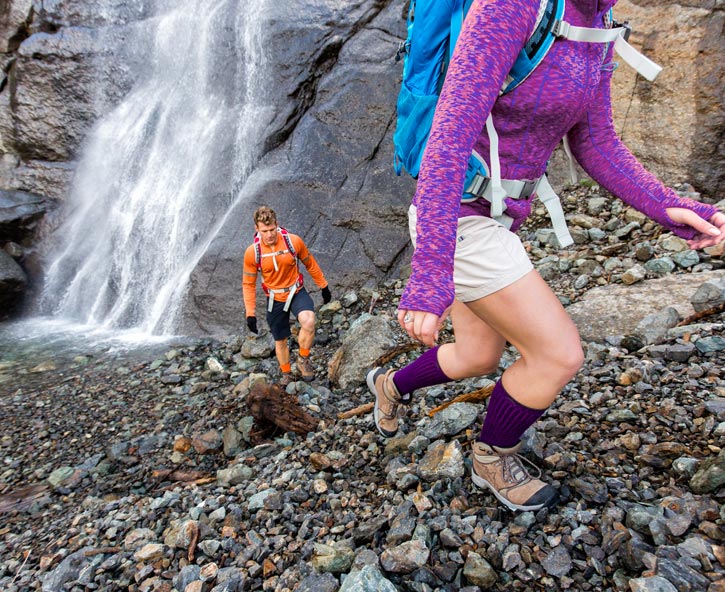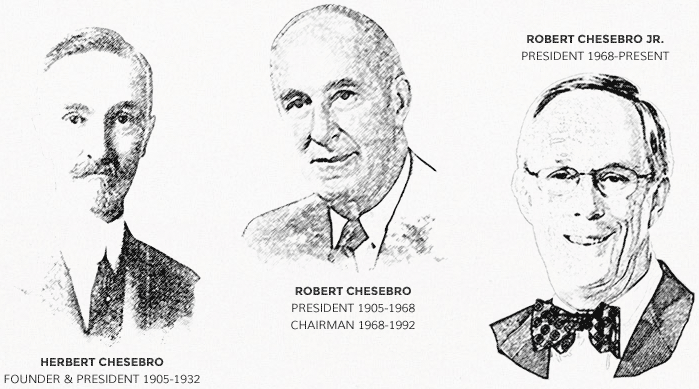
Our Story
Since 1905 Wigwam® has been committed to our employees, our community and knitting fine quality socks just for you.

120 Years of Family - Wigwam Mills, Inc.
Watch History VideoIn unraveling Wigwam's past, one quickly finds the common threads that have knitted together the company's history - an industrious work force and innovation. From knitting needles to knitting machines, the product line of Wigwam has been shrunk and expanded repeatedly over the years, experiencing many successes and a few flops (plastic socks?) too, while the company continually reinvents itself. Yet through it all, the employees have been the mainstay, creating high-quality reliable products.
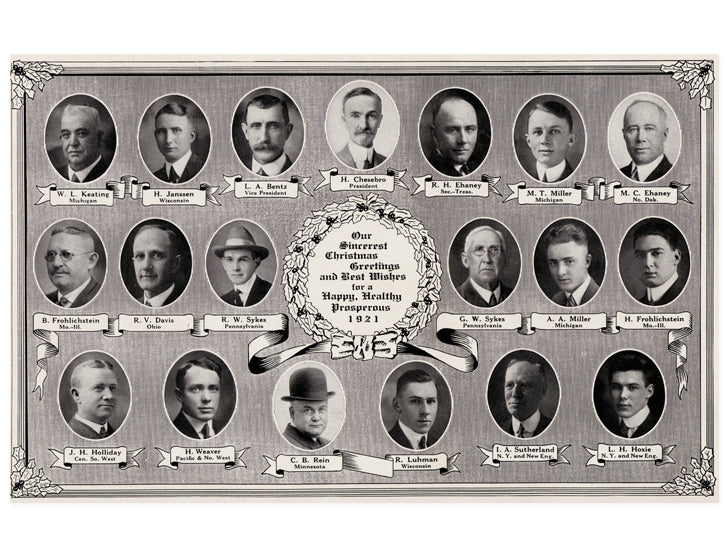
Originally the Sheboygan Knitting Company thrived due to the colossal lumbering industry in Wisconsin. Unfortunately, in 1904 a devastating fire resulted in the liquidation of the company. However, In the months following the fire, the Hand Knit Hosiery Company was formed by: Herbert Chesebro, Lawrence A. Bentz and Robert H. Ehaney. These three men took responsibility for a company that, years later, would become the leader in outdoor, athletic and active sock production.
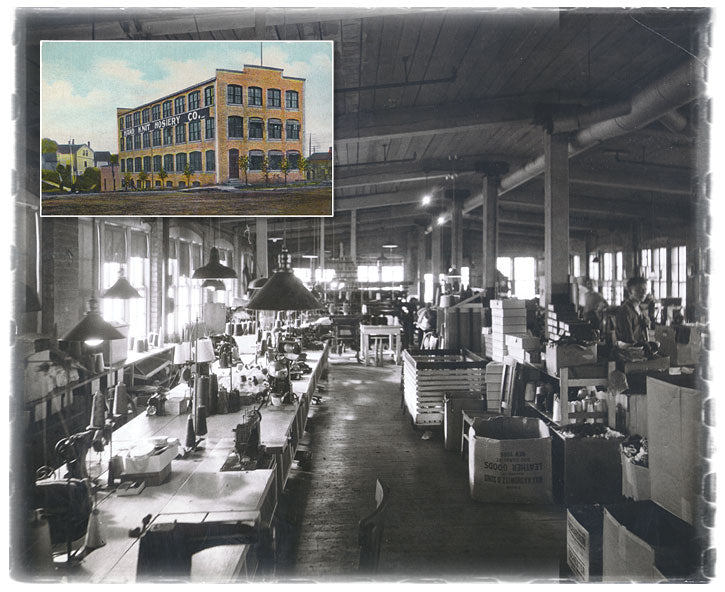
In the early 1900s Hand Knit experimented with athletic sock production. Being one of the first firms to do this, the impact that athletic sock production has had on the hosiery industry over the years simply cannot be overstated.
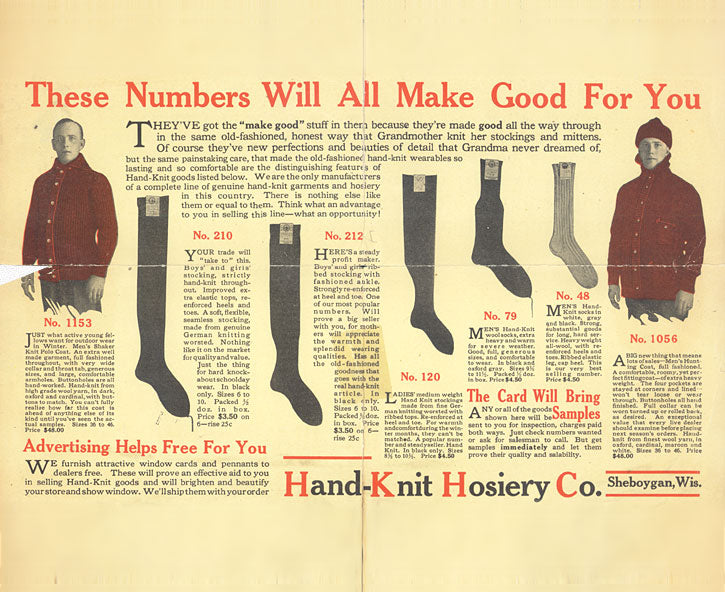
To aid in selling its rapidly growing production line. Hand Knit began the monthly Publication "Ravelings". Written by President Herbert Chesebro, its informative and light hearted articles got the word out about Hand Knit's product line.
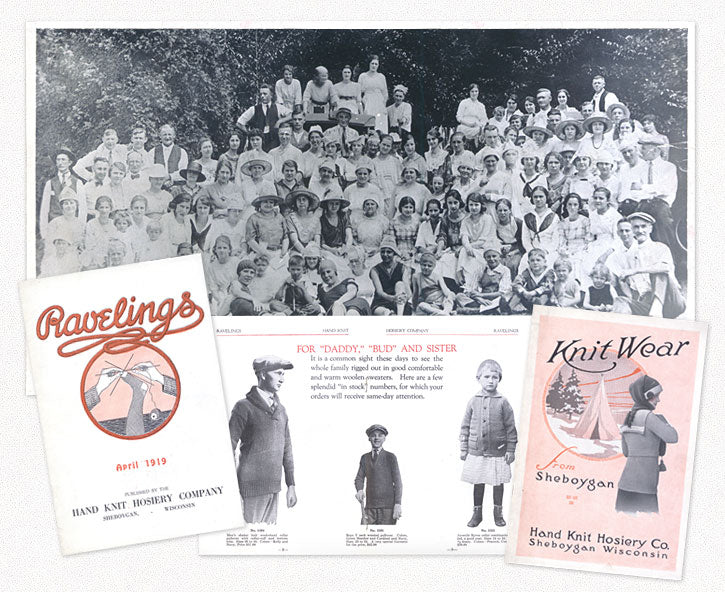
During this era Hand Knit also manufactured for other firms. One clever result was a pair of red and green socks knitted for the elite outdoor goods retailer Abercrombie and Fitch, to aid boaters in differentiating between port and starboard.
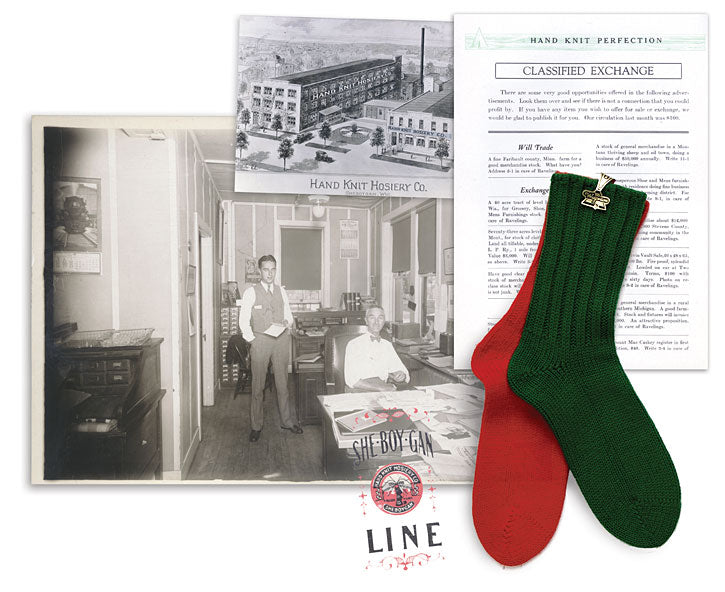
Oddly enough Hand Knit also made woolen bathing suits. The same machines that manufactured socks and sweaters could also be used for swimwear, keeping the company busy all year long.
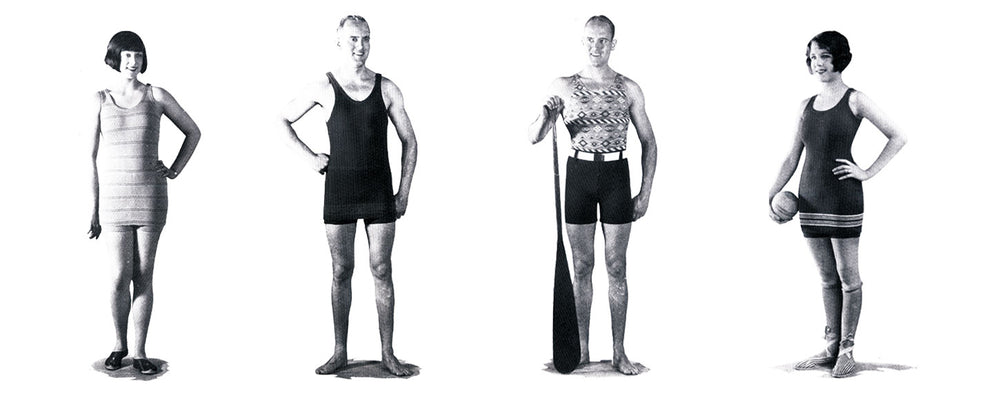
Taking note of increasing sports-minded enthusiasm, Hand Knit began manufacturing a line of athletic sweaters, known as Badger Knitted Sports Wear. Rounding out the product line, Hand Knit also began manufacturing dog sweaters. One wouldn't want old Fido's snout to be out of joint. Woof, woof!
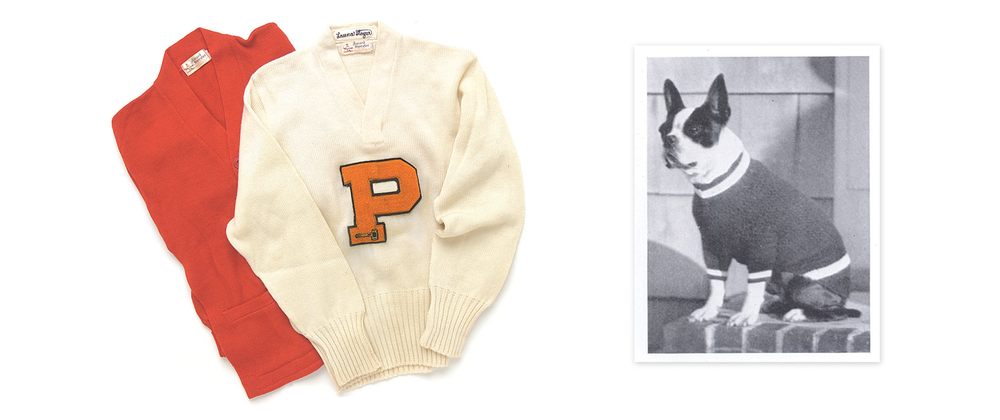
In the 1940s Hand Knit embarked on a very successful nationwide ad campaign. During this time Vogue magazine's cover model appeared wearing Wigwam® caffettes and anklets, clueing the American public in to fashion accessories.

Popular in the late 1940's Tepee socks were intended for indoor wear. They were comprised of a sock, sheepskin leather sole, pure foam rubber insole and a shape-holding high heel.
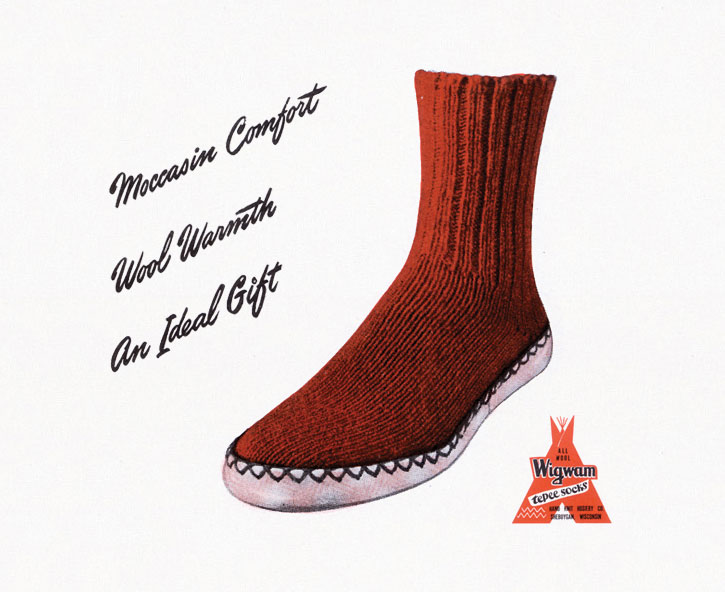
In 1945 the War Production Order had been enacted. Which meant Hand Knit's machines were to be used only to produce wool or partly wool socks for the Army and Navy.
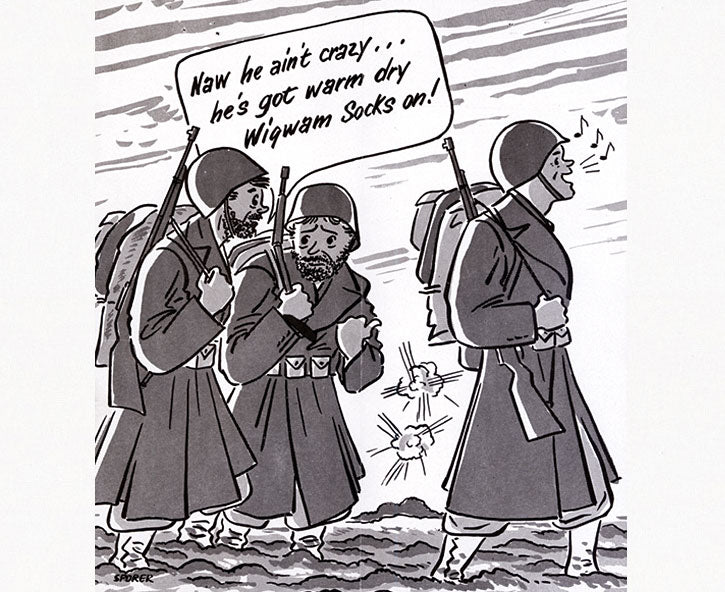
Keeping abreast of new fibers Hand Knit worked with DuPont® synthetic nylon fibers. Their work resulted in all nylon athletic and hunter's socks, which wicked moisture and wore like iron.
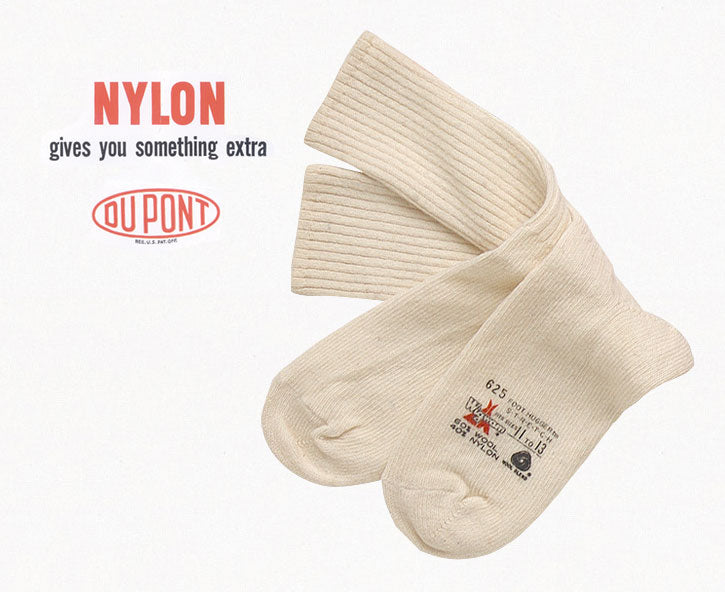
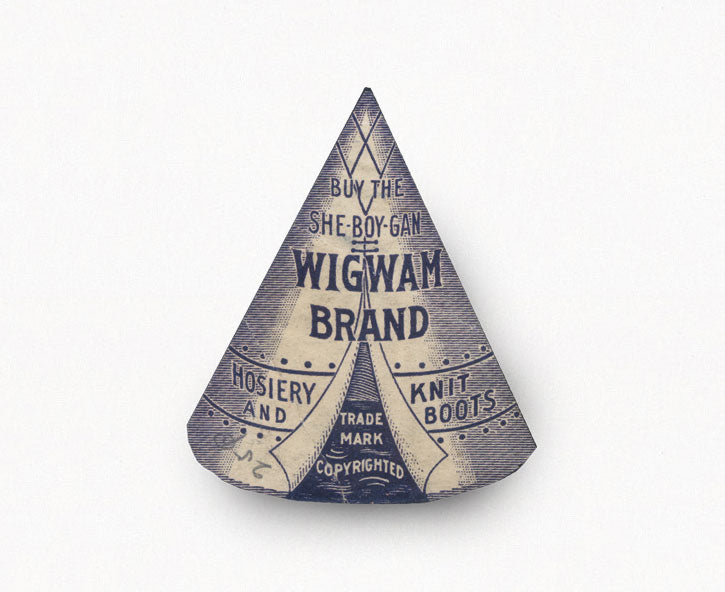
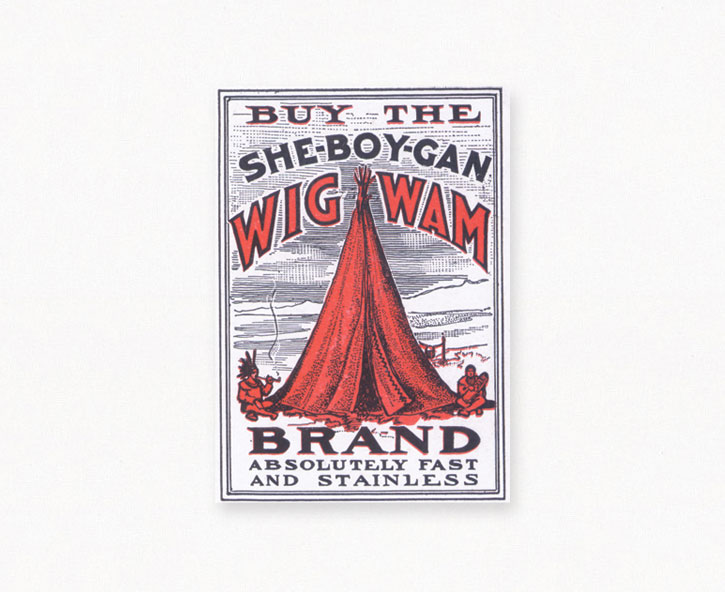
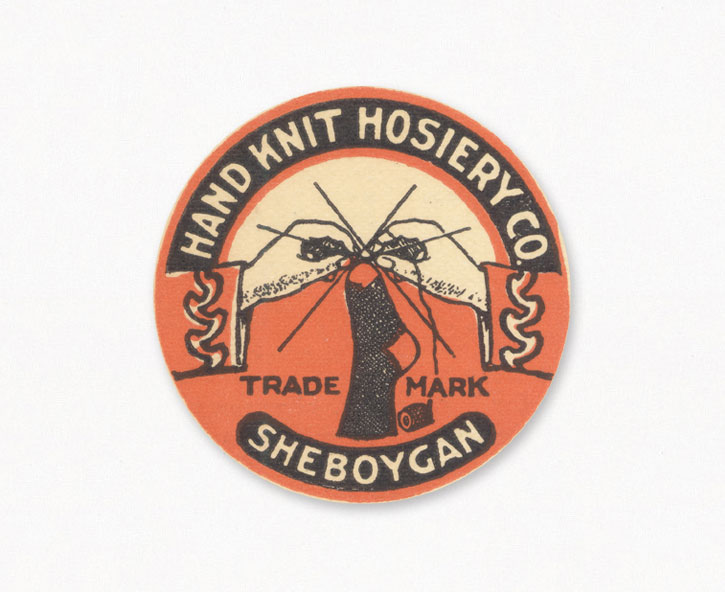
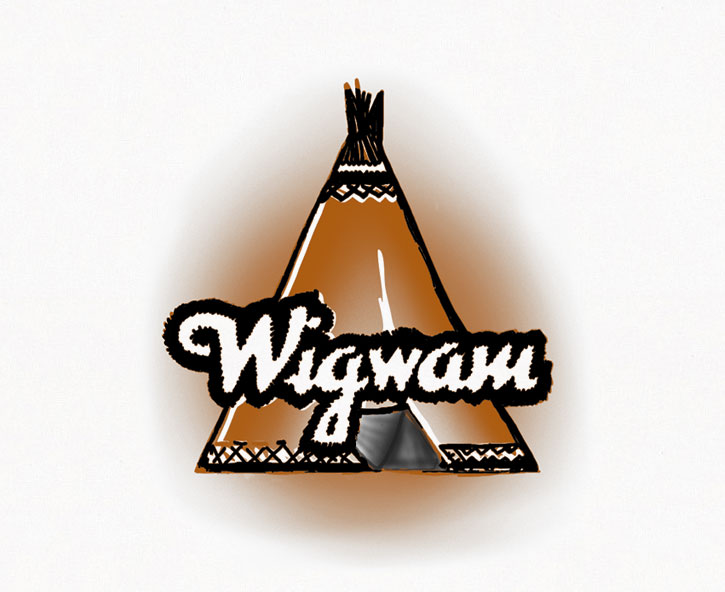
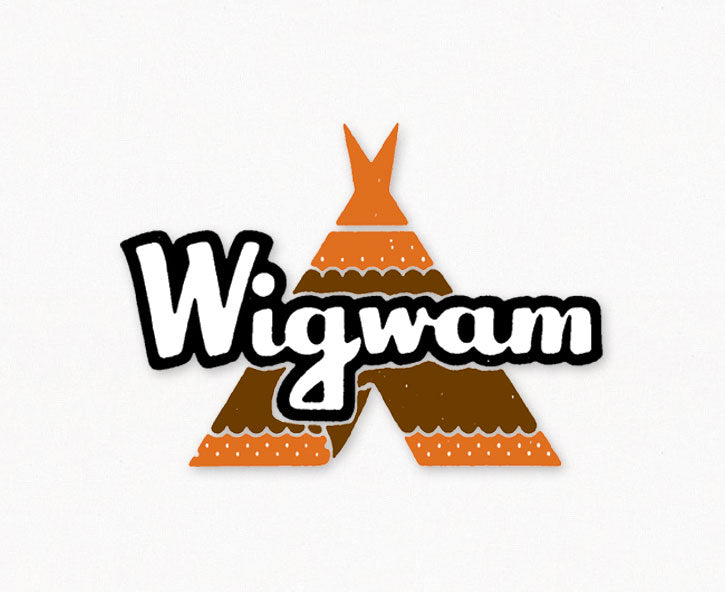
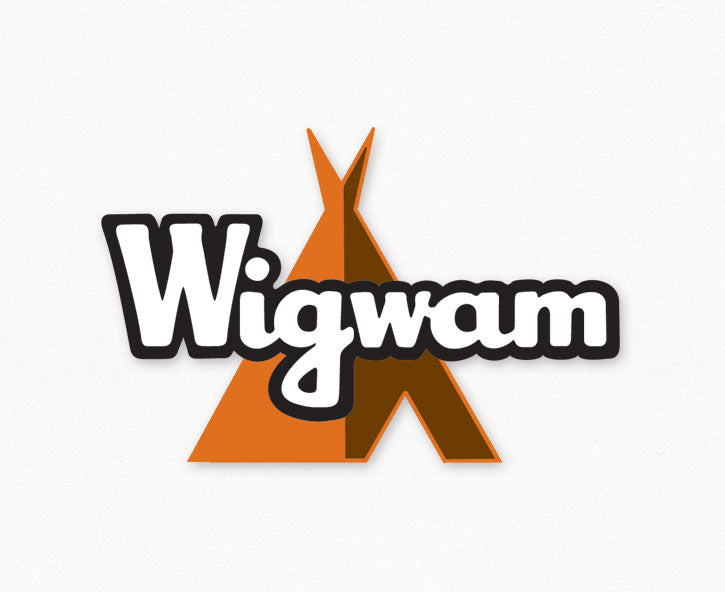
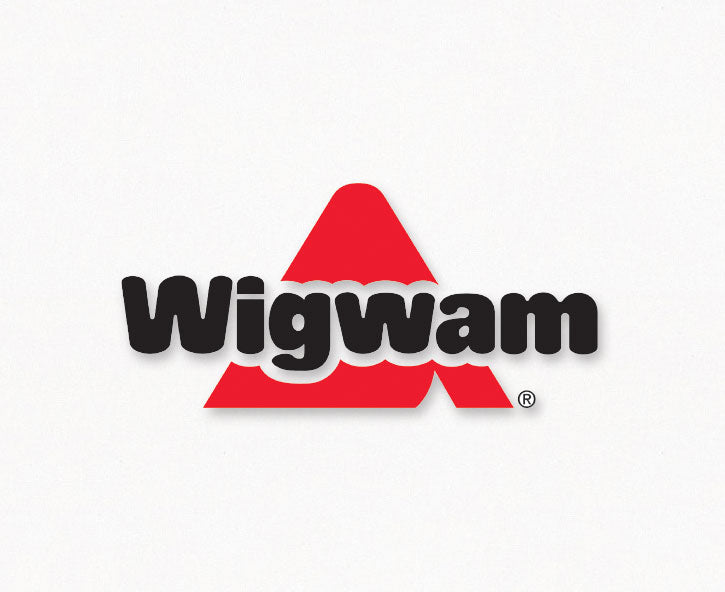
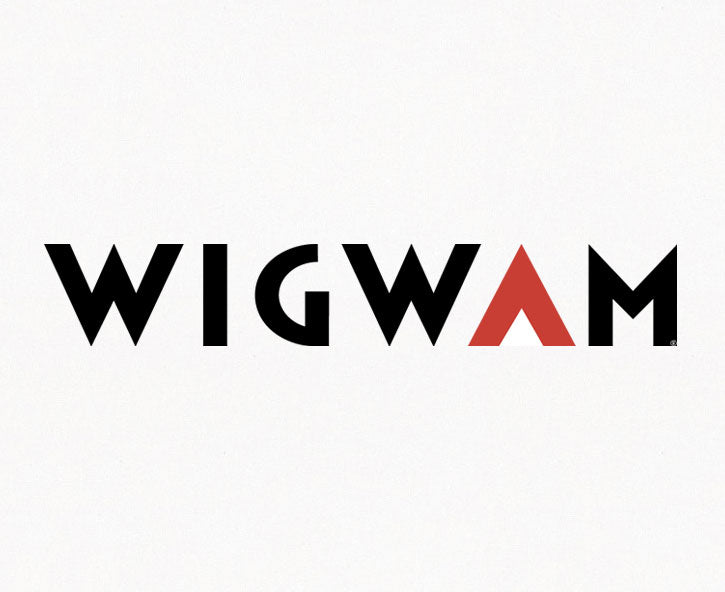
Robert Sr. announced the corporate name change in a letter addressed to friends in the 1957 catalog and closed by stating, "But only our name changes. Our people, our quality, our sales policies - and above all, our desire to work with you - remain the same."
Interestingly enough, little else is known about its origin. The best guess stems from a pair of crossed knitting needles with yarn rounding out the top, which resembles an actual American Indian hut known as a wigwam. With its domed top, one can still see the resemblance in the company's logo in use today.
In 1960 the company hired the third generation of the Chesebro family, Robert Chesebro Jr. His early duties included being mentored by all the manufacturing departments for a year prior to starting his Master's of Business Administration program at the University of Michigan.

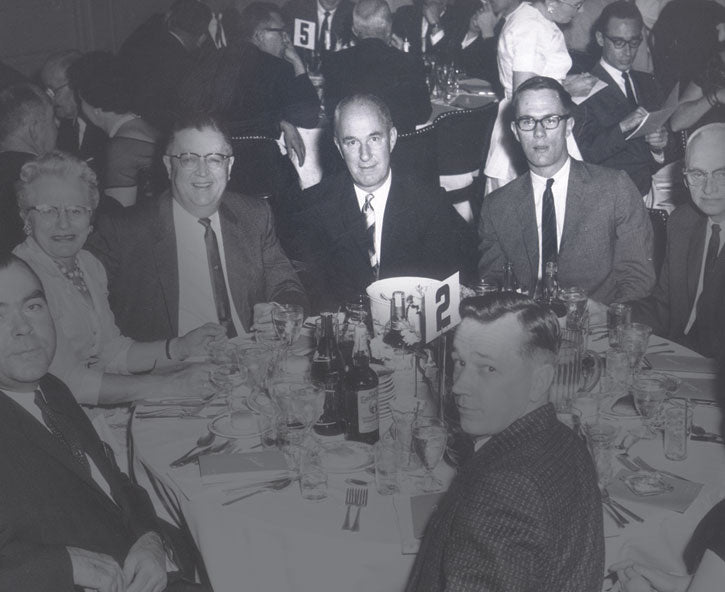
As Robert Jr. saw great potential in the growing sporting goods market and set his sight on capturing Wigwam's share of it. He successfully expanded the headwear line that had been somewhat overlooked by the company in the past. In addition, he also accentuated Wigwam's athletic and outdoor socks, which comprise much of the product line today.
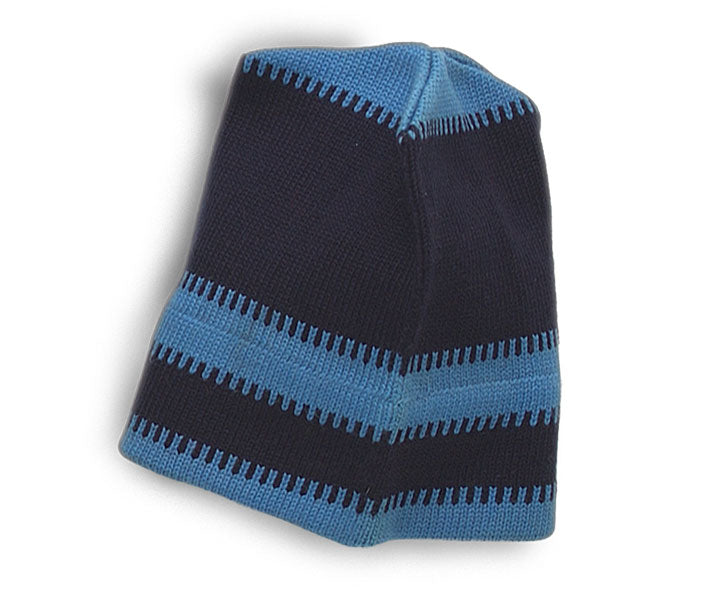
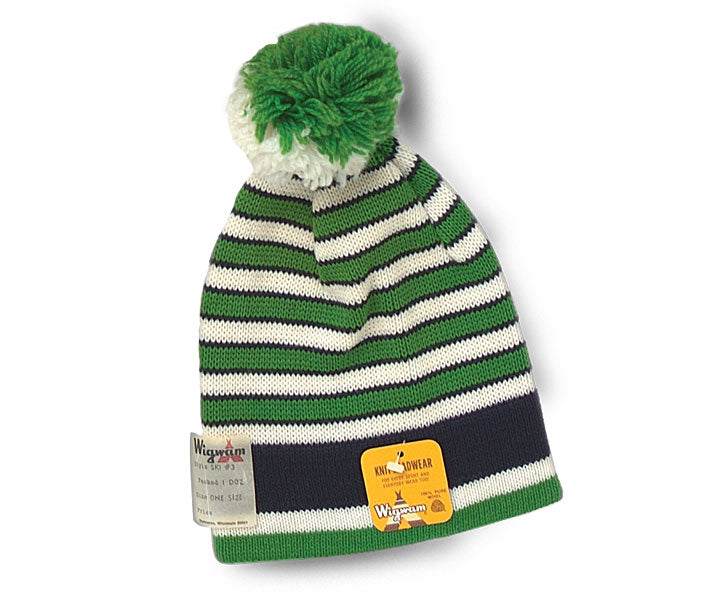
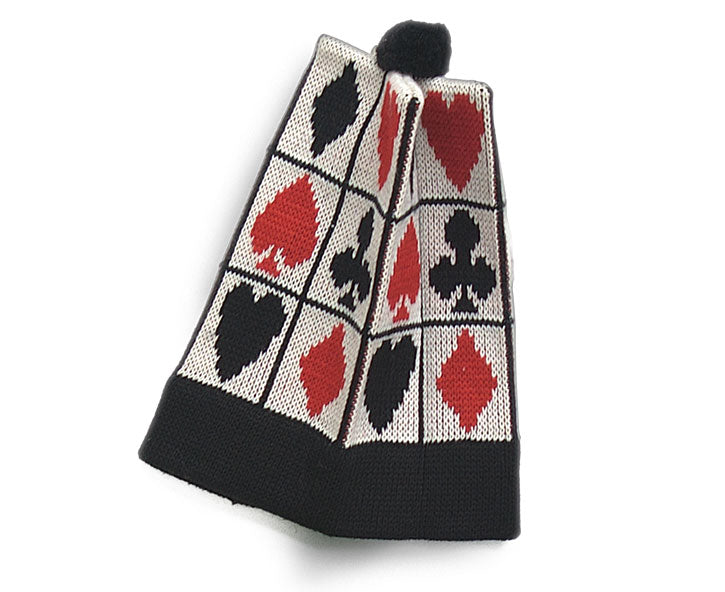
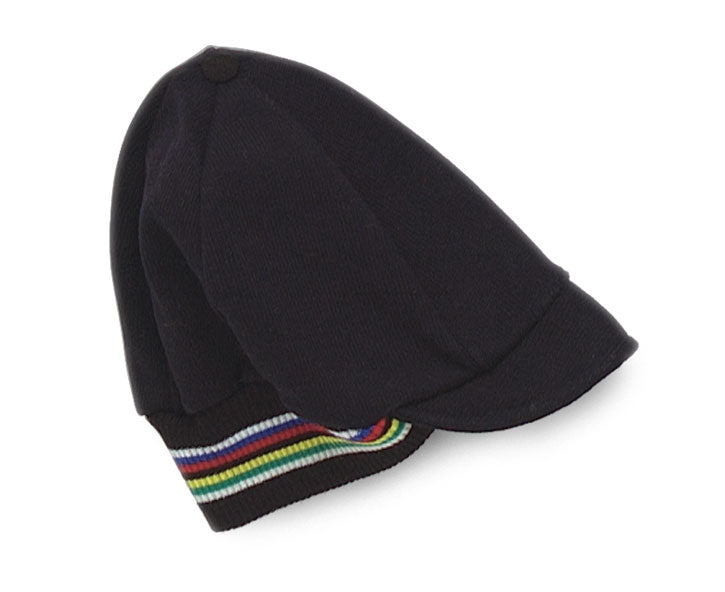
Wigwam® secured famed golf pro Billy Casper and tennis champion Pancho Gonzales. These atheletes told the world what kind of socks they wore and more importantly, why. Quality, performance and comfort were the common answers heard escaping from these extraordinary athletes' mouths throughout the 1960's and 1970's.
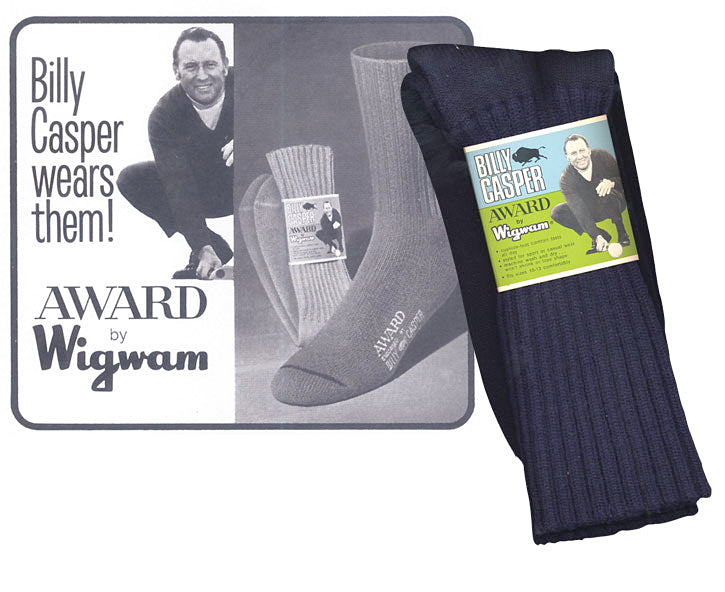
Yet another major move was on the horizon as Wigwam's own growing pains were realized. In 1969 the board approved the purchase of 16 acres of land in the Sheboygan Industrial Park. Construction of a modern new facility was started by early 1970 and would not stop until all 200,000 square feet were ready for the full-time manufacture of socks.
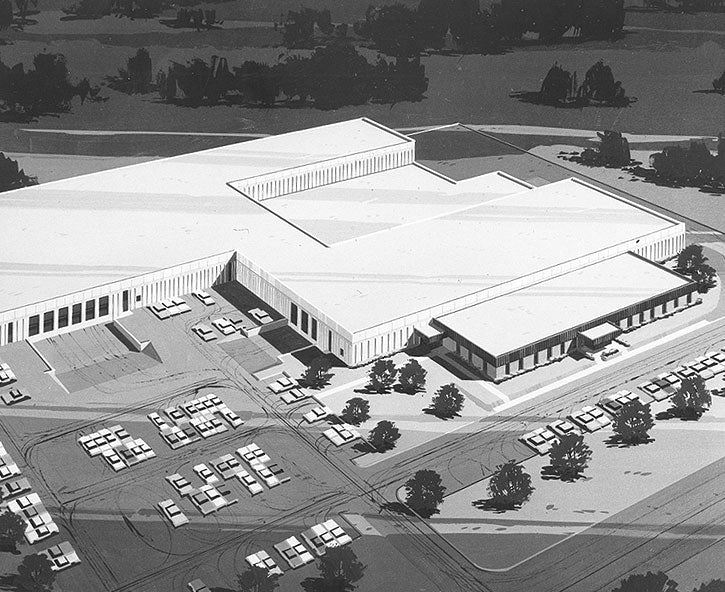
Refusing to wear a laundered sock, comedian Jerry Lewis began purchasing socks from Wigwam® by the gross in 1975. Wearing each pair only once, Lewis was partial to style 612. Today the style, Advantage, is the sock of choice that Jerry's secretary dutifully orders by the gross several times a year. And exactly what does Mr. Lewis do with all those barely used socks? It seems a certain charity is extremely grateful for the comedian's continued generosity.
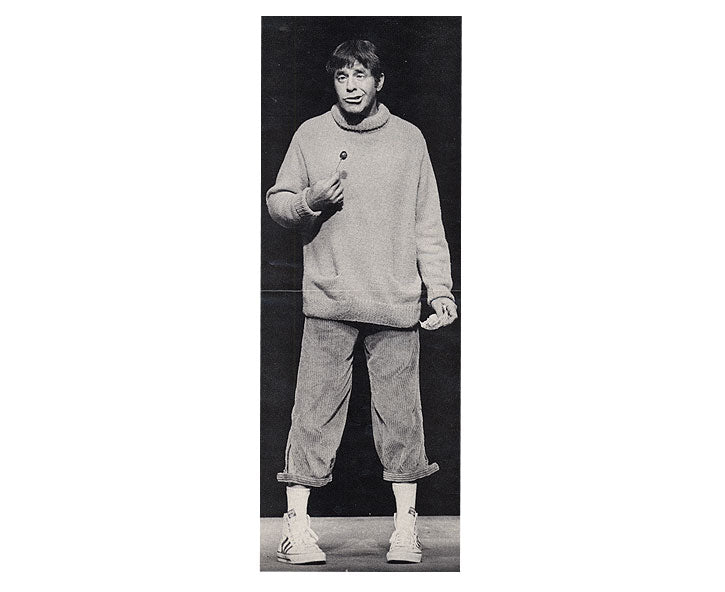
Honoring sporting goods innovators, the National Sporting Goods Association inducted Robert Sr. into its Hall of Fame in 1978. Some of the highlights from Robert Sr.'s career include: establishing and successfully advertising brand names in both athletic and hunting hosiery, as well as developing the use of colored toe looping thread for size identification and being a pioneer in utilizing nylon in athletic, hunting and ski socks.
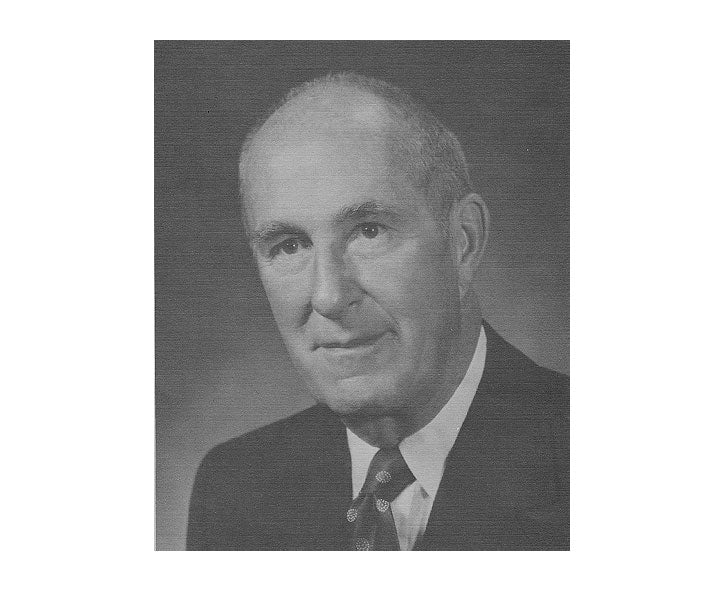
A new comer in 1983 was the Moraine sock. Advertised as a "Wool sock that's cotton pickin' soft," it surpassed all sales expectations and became Wigwam's best seller. Found on the feet of college kids on campuses across the country, hikers in national parks, hunters out in the field - to say the Moraine started a trend would be but a subtle understatement.
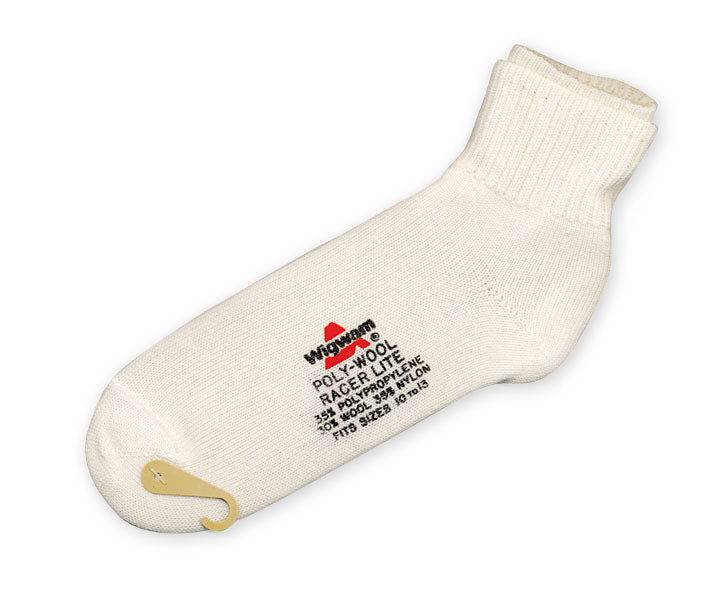
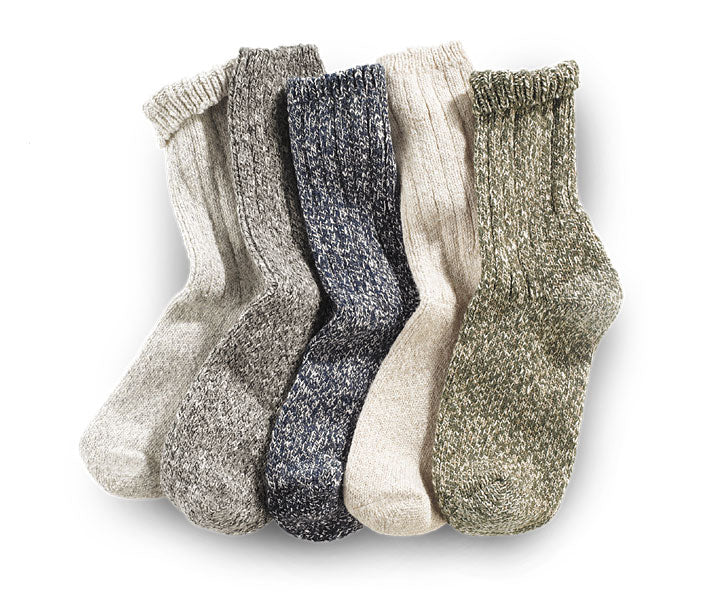
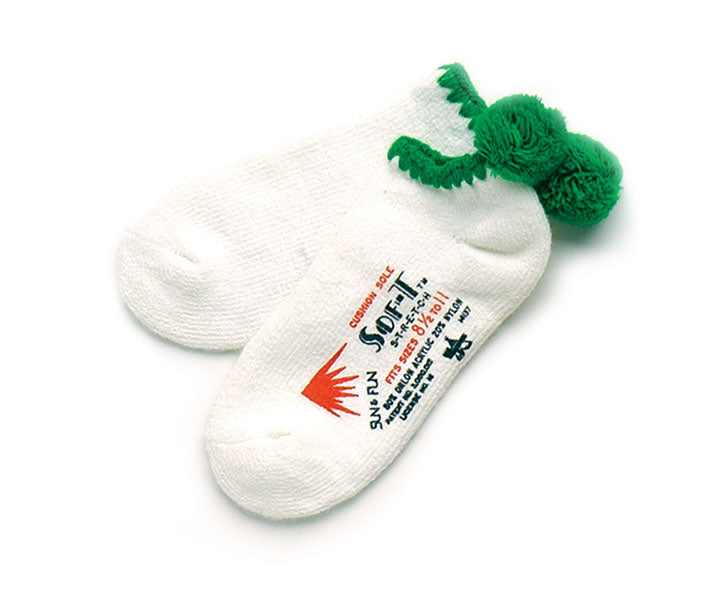
In December 1984 the first Wigwam® warehouse sale was started. The citizens of Sheboygan began flocking to Wigwam's sales of discontinued styles, irregulars and overruns. These popular events continue today with monthly sales and are well attended by community members seeking comfort and quality represented in the Wigwam® and Ultimax® brands.
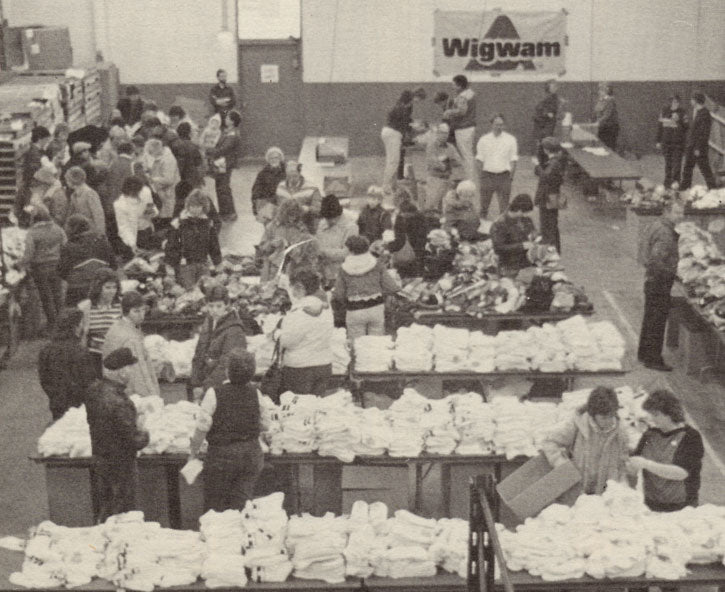
As globalization became a corporate buzzword, Wigwam® began focusing on international sales in the late 1980's. Initially, hosiery and headwear shipped to Europe, though today Wigwam® socks can be found in over 30 countries, including the Principality of Andorra, which is only 175 square miles.
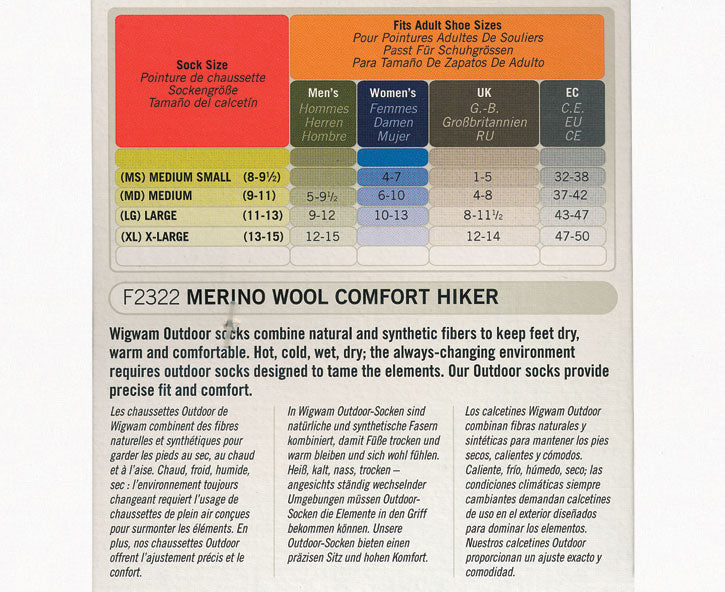
In 1992, Wigwam® unveiled its sports-specific line, patented and trademarked under the name Ultimax®. The customary design had moisture repelling (hydrophobic) yarns on the inside of the foot and the moisture absorbing (hydrophilic) fibers on the outside. The key to Ultimax® is wicking moisture away from the bottom of the foot to the top where it quickly evaporates. This moisture movement allows the foot to remain drier and thus free of dreaded blisters.
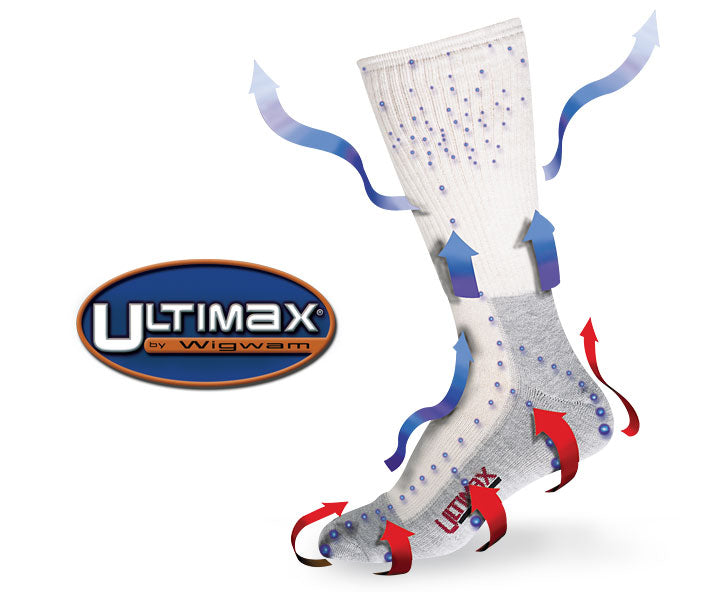
When originally introduced, Ultimax® was knitted in seven styles designed for aerobic fitness, hiking, running, tennis and walking. Today, the line accounts for 20% of Wigwam's sales and 34 styles are knitted for backpacking, cross-country skiing, cycling, downhill skiing, hiking, running, snowboarding and walking. Observing outdoor trends, Wigwam® develops an Ultimax® sock style as a particular sport or activity becomes popular. A more recent example would be snowboarding.
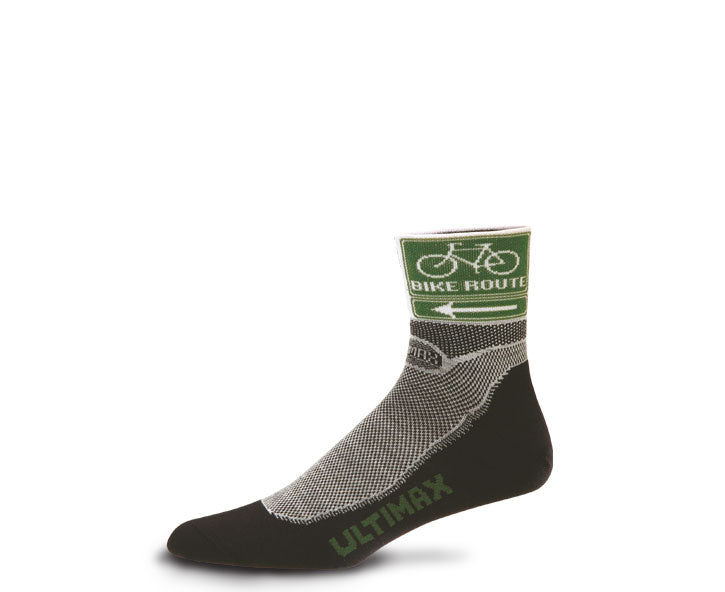
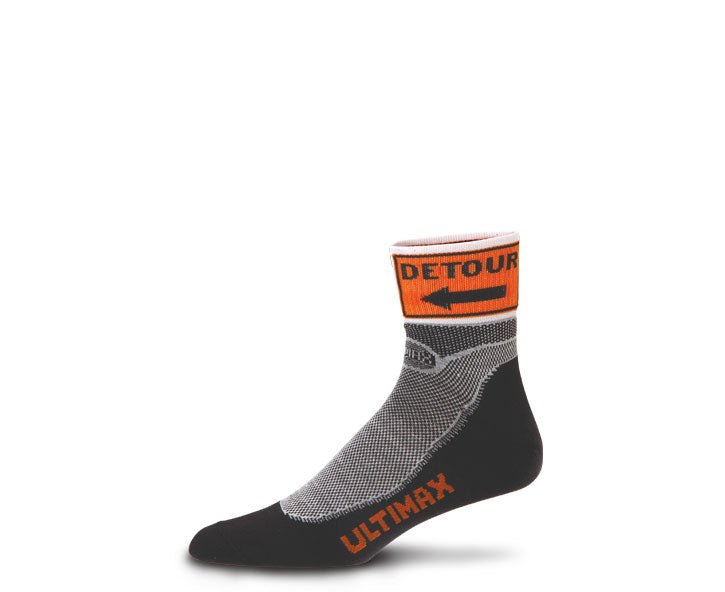
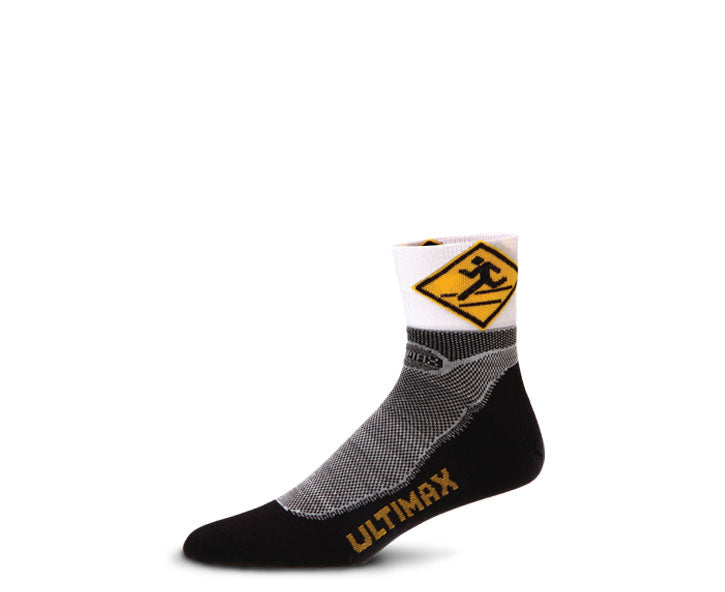
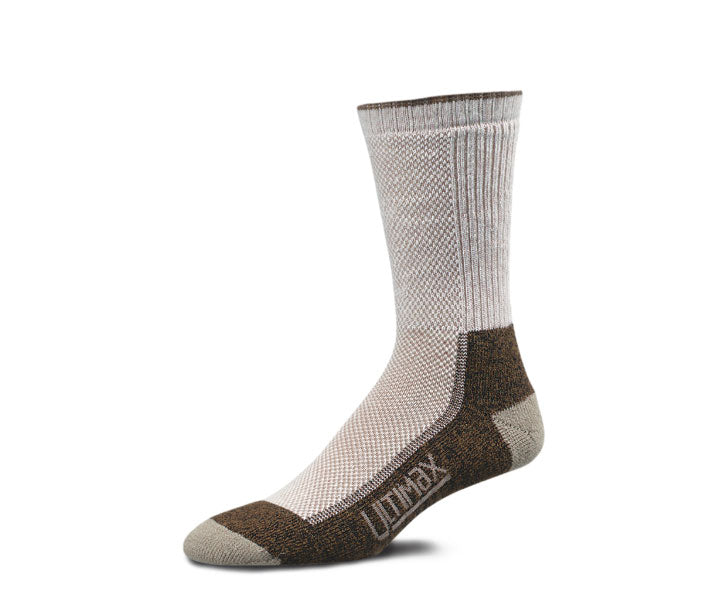
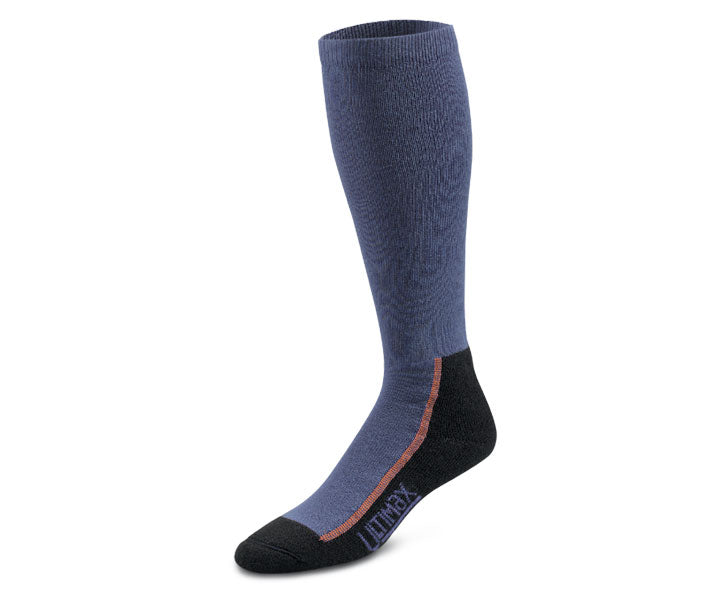
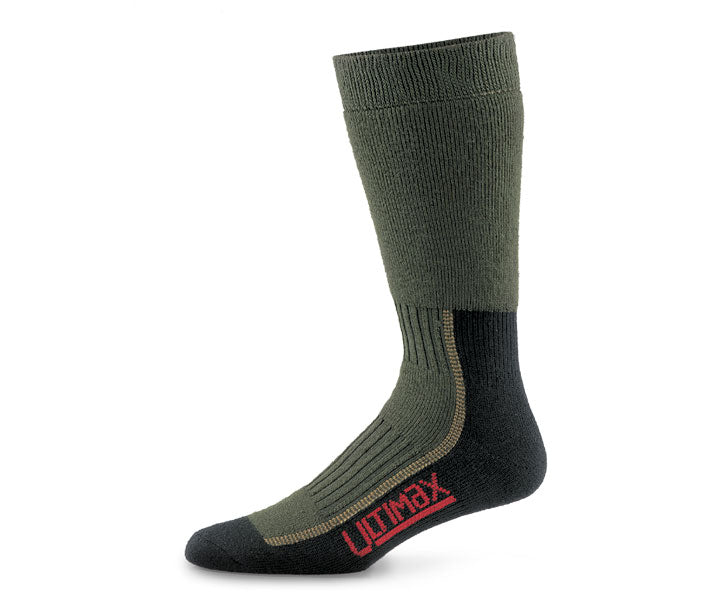
As endurance sporting events, such as the Ironman® Triathlon, increased in popularity, Wigwam® envisioned an idea that would link its name to such extreme events and the remarkable athletes drawn to them. Upon obtaining a license agreement from the World Triathlon Corporation® in 1994, Wigwam® began utilizing the Ironman® logo on its line of Ultimax® cycling and running socks. In addition to using the logo on products, Wigwam® also became the official sock sponsor of the annual Ironman® Triathlon World Championship.
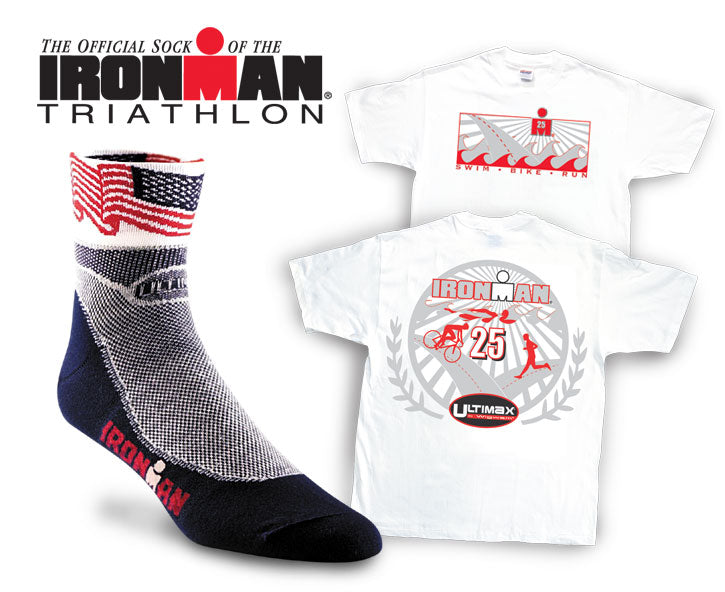
Wigwam’s Merino wool line was unveiled to the world in 1996. Wildly successful is the only way to describe its launch. Wool socks that did not itch were welcomed without hesitation. Wigwam® launched its own line for hiking, skiing, snowboarding and other active endeavors. The luxurious softness of the socks is obtained through finer diameter fibers originally from Merino sheep. Though this grade of wool had been utilized years earlier in sock 642, some headwear and knee socks, those sales pale in comparison to the athletic, casual hiking and snowsport socks purchased by scores of people today. A natural alternative to the synthetic fibers found in many high performance socks, the Merino wool line is a natural number one.
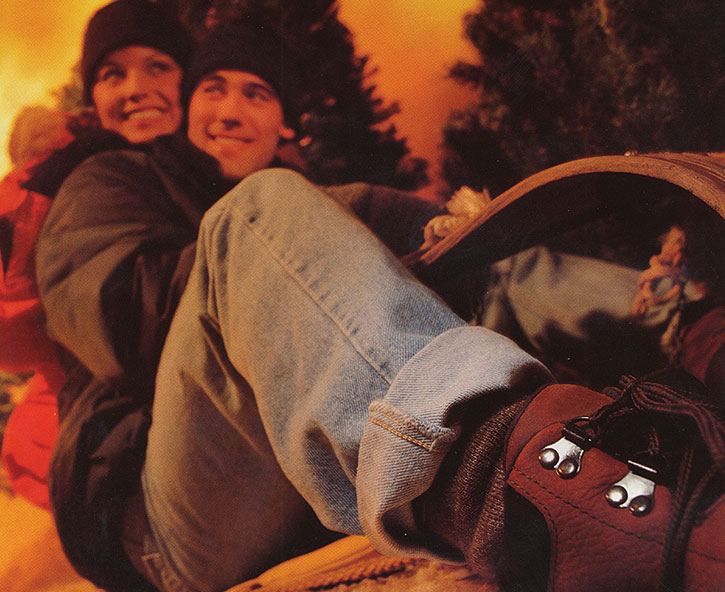
In 2002 Wigwam® unveiled one of its most revolutionary concepts to date. A concept so revolutionary that it was the first sock manufactured in North America that W.L. Gore® recommends for use in Gore-Tex® footwear. INgenius®. A concept that had been in the works for close to ten years involves the integration of a liner sock and outer sock knit together as one piece of fabric. The resulting socks were released to the outdoor market at the Outdoor Retailer Summer 2002 trade show and then to athletic and snowsports markets in 2003. INgenius® was applauded with rave reviews.

Wigwam debuted its popular Peak 2 Pub collection at Outdoor Retailer in spring of 2016. This collection is designed for the active outdoor consumer. The socks feature our patented moisture control technology along with Merino Wool and a secure fit. They'll keep your feet comfortable no matter where life's adventures take you. And when you're ready to relax at your favorite pub at the end of the day, you'll look stylish too!
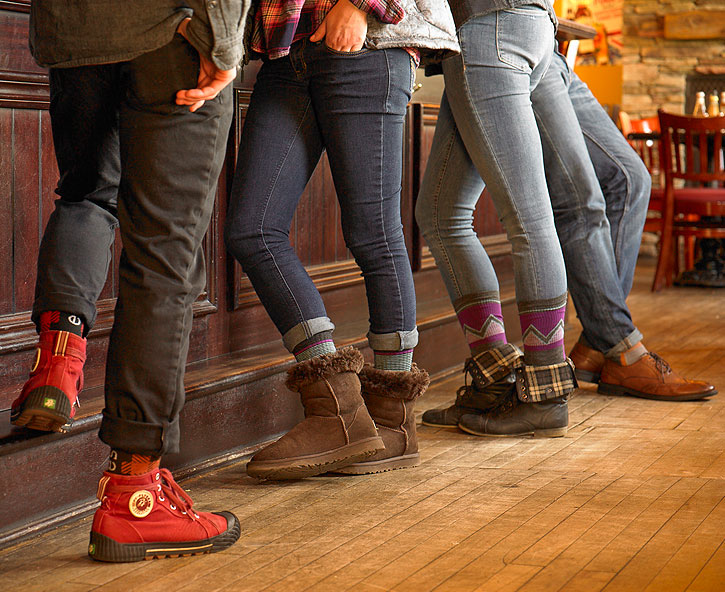
Wigwam celebrates its 112 years by re-introducing new collections of tried and true classics, like the Cool-Lite Hiker Series. Seen here is the updated CL2 series which builds off the quality and durability of Cool-Lite Series, and adds a pop of color and style current with today's trends.
